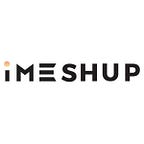What Does a 3D Game Character Pipeline Look Like?
Get Inspired
First comes the idea. If you’ve ever tried to make something, you know that you can find inspiration in many places, but great places to start are websites like Tumblr, Artstation, Unsplash, Pinterest, and WeHeartIt. It’s a great way to get a lot of exposure to incredible new work, every day — and also as a place to share your own. You’ll use the attributes (both physical and personality-wise) you come up with for your character in the concept art stage. But your inspiration is where the excitement begins!
Sketch it out
Now that you’ve thought of something, it’s time to get your hands dirty. Even if it’s only a very sketchy sketch, it’s a good idea to get down an image on paper. Things you might want to include in this sketch include the basic shape (silhouette) and key facial or body features. It might even be helpful to jot down a few words that describe the aspects of your character’s personality to assist you. Artists with a lot of experience may go straight to modeling their characters in 3D, but for most of us, a pen and paper is an unavoidable step. Don’t be afraid to sketch out a lot of ideas.
Modeling time!
Ok, here comes probably the longest step. Once you have your drawing complete, it’s time to make it 3D. If you’ve never used 3D modeling software before, this is where practice makes perfect. Great sculpting and topology tools include ZBrush (which we’ve reviewed here!), Blender, or 3ds Max. The sculpting section of the pipeline might look like this: First, the artist “blocks out” the general silhouette of the character. This is done to get a feel for the scale and ratio of the model’s size and components. Then, different brushes are used to sculpt the hard surfaces, basic forms, the more detailed and defined forms (like muscles, creases, wrinkles, etc.) Next, a topology needs to be created, which is basically a way to define what shapes make up the mesh. When making an animated video game character, however, a retopology needs to be done, in order to “clean up” this mesh for easy animating. Baking is another way a high-poly original model can be optimized for game use: it “bakes” the high-resolution data into a low-poly model.
The (important) extra touches
After you have your mesh, it’s time to get it looking pretty. Textures play a large part here — often, artists use Substance Painter to get PBR textures, or make their own using tools like ZBrush’s Polypaint. To add in their textures, artists make a UV map to tell the computer where to put each image file. Getting the “look dev” right is what comes next — essentially, it means adjusting the composition of the scene and its lighting for the perfect render (final image output.) Depending on what you’ll need to use the character you’re designing for, you may touch up these images with a 2D editor, like Adobe Photoshop. These extra touches are what really makes your character come to life — the colors, composition, and feel of the scene go a long way in making material for a 3D game.
All rigged up
Now your character is ready to be animated! This is a two-step process: first, the bones of your character need to be rigged. Second, you’ll define the movements these bones can make, and bring your character to life! To rig a model is no small feat — artists need to define these bones in their mesh as well as establish control points to move the skeleton. After whatever set of animations the model needs is finished, the artist packages it all up. Usually, the end file is in .FBX format. The game character is complete! The game engine takes it over from here — it will convert the .FBX files you feed it into game content.
So you want to be a game artist…
If you’ve made it to the end of this article, you’ve noticed that a lot goes into the pipeline when you’re making game assets. The characters you make for a game define what your production is all about, though, so it only makes sense that you have to put in so much effort to get the great assets you want! So if you’re excited about this, but you’re a beginner, what should you do?
Two words: start now.
Practice hard every day! And even when you’re not behind your computer screen, you can work on your character pipeline: pay detailed attention to the world around you. Color, anatomy, texture, movement…That first part — inspiration — will have a twofold benefit for your art. First, it will provide you with the ideas you need to make your characters. And secondly, it will keep you excited about what you’re doing. Looking at what seasoned 3D artists have written about their creative processes happen to be extremely helpful resources for beginners, too! For example, check out this hair modeling for game characters workflow walkthrough. Besides that, we’ve compiled a list of resources for 3D beginners that might be useful as well!
Stay tuned in to what we have to say at iMeshup. We have plenty of guides, advice, notes, tips, and resources published weekly on this very blog. And feel free to ask for more! Make a visit iMeshup today— where you can try out our online gamedev asset pipeline tool for FREE for 14 days!
